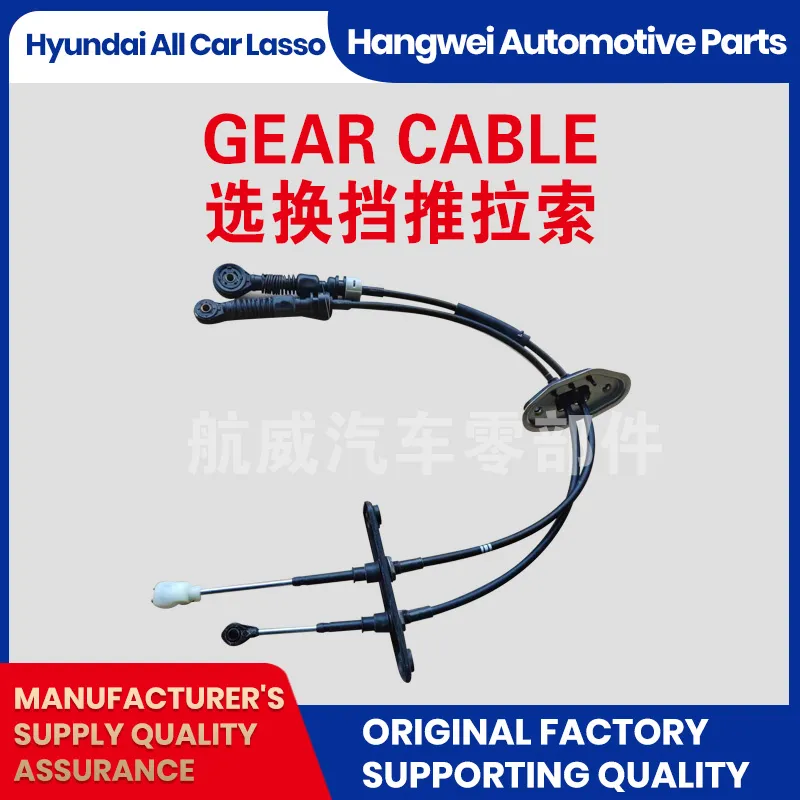universal hydraulic clutch line
Understanding Universal Hydraulic Clutch Lines
The hydraulic clutch system is a pivotal component in modern manual transmission vehicles, providing a smooth and efficient means of engaging and disengaging the engine from the transmission. Among the various components that make up this intricate system, the universal hydraulic clutch line plays a crucial role. This article delves into the significance, functioning, and maintenance of universal hydraulic clutch lines, ensuring enthusiasts and vehicle owners alike understand their importance.
What is a Universal Hydraulic Clutch Line?
A universal hydraulic clutch line is a flexible tube designed to transfer hydraulic fluid from the clutch master cylinder to the clutch slave cylinder. This line is pivotal in converting the force applied on the clutch pedal into hydraulic pressure, which subsequently actuates the clutch mechanism. The term universal indicates that this clutch line can fit a variety of vehicle makes and models, making it a versatile option for automotive repairs and upgrades.
The Functioning of the Hydraulic System
The hydraulic clutch system operates on Pascal’s principle, which states that pressure applied to a confined fluid is transmitted undiminished in all directions. When the driver presses the clutch pedal, the master cylinder generates hydraulic pressure that travels through the clutch line to the slave cylinder. The slave cylinder then pushes against the clutch fork or release bearing, disengaging the clutch plate from the flywheel. This process enables smooth shifting of gears, essential for the vehicle’s performance.
Importance of Universal Hydraulic Clutch Lines
1. Versatility As mentioned earlier, universal hydraulic clutch lines are designed to be compatible with a wide range of vehicles. This universality means that mechanics and DIY enthusiasts can stock a single type of line to service multiple vehicles, reducing inventory costs and simplifying repairs.
2. Durability Most universal hydraulic lines are made from high-quality materials such as rubber or reinforced plastic, ensuring they can withstand high pressures and temperatures. This durability is crucial, as a burst or leak in the hydraulic line can lead to complete clutch failure, rendering the vehicle undriveable.
3. Ease of Installation Universal designs often come with pre-fitted connectors, making installation straightforward. This feature allows for quick replacements and minimal downtime, which is especially beneficial for shops with a high volume of service.
universal hydraulic clutch line

4. Cost-Effectiveness By choosing a universal hydraulic clutch line, vehicle owners can often save money. These lines are typically less expensive than OEM (original equipment manufacturer) parts and offer comparable performance, making them a favorable option in many repairs.
Maintenance of Hydraulic Clutch Lines
While universal hydraulic clutch lines are built to last, regular maintenance is essential to prolong their lifespan and maintain the hydraulic system's efficiency. Here are some maintenance tips
- Inspect for Leaks Regularly check the entire hydraulic system, including the clutch line, for any signs of leaks. Fluid spots under the vehicle or a decrease in fluid levels in the reservoir are indicators that something might be wrong.
- Check Fluid Condition Hydraulic fluid can degrade over time, becoming contaminated with moisture and debris. It is advisable to replace the fluid as per the manufacturer’s recommendations to ensure optimal performance.
- Look for Wear and Tear Inspect the clutch line for any signs of wear, such as cracks, fraying, or bulging. If you notice any of these issues, it’s best to replace the line promptly to avoid potential failure.
- Monitor Clutch Performance If you experience difficulty engaging or disengaging the clutch, it may be a sign of a failing hydraulic system. Addressing these issues early can prevent more extensive damage and costly repairs.
Conclusion
In summary, the universal hydraulic clutch line is a fundamental component of the hydraulic clutch system in various vehicles. Its design offers flexibility, durability, and cost-effectiveness, making it an excellent choice for repairs and replacements. By understanding the importance and maintenance of these lines, vehicle owners can ensure their clutch system operates efficiently, enhancing overall driveability and performance. Regular check-ups and proactive maintenance can go a long way in ensuring the longevity of this essential component.
-
Upgrade Your Vehicle with High-Quality Handbrake CablesNewsNov.01,2024
-
Optimize Your Bike's Performance with Quality CablesNewsNov.01,2024
-
Enhance Your Vehicle's Performance with Quality Clutch ComponentsNewsNov.01,2024
-
Elevate Your Vehicle's Performance with Quality Throttle CablesNewsNov.01,2024
-
Elevate Your Vehicle's Performance with Quality CablesNewsNov.01,2024
-
Affordable Solutions for Your Cable NeedsNewsNov.01,2024
